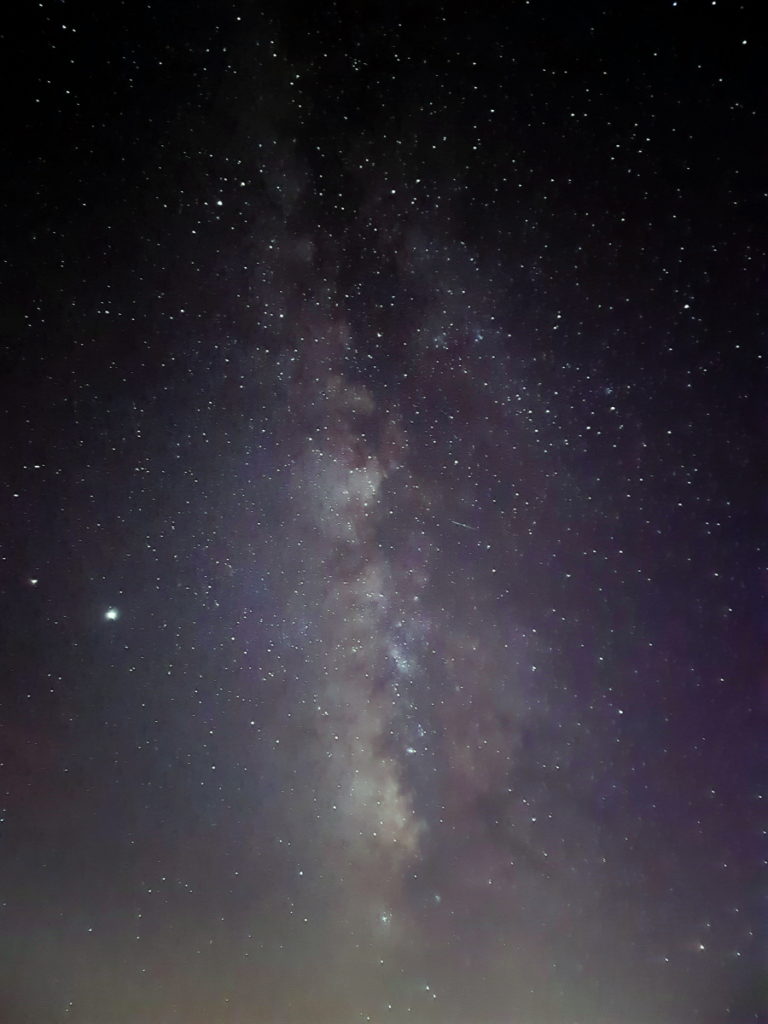Smartphones are ever-evolving and so are their cameras. Over the last few years, smartphone photography has taken huge leaps, particularly in low light. With night modes, starry night modes, ultra-stable steady shots, etc., smartphones are getting better each day with shooting bright and life-like images. One of the best phones for shooting photos today is Samsung’s Galaxy S20 Ultra, especially great for astrophotography.

With a huge 1/1.33-inch 108-megapixel primary sensor with F1.8, the Samsung Galaxy S20 Ultra captures a large amount of light, one of the best in business. This large sensor and aperture size allow it to intake more light than smaller sensors on most smartphones. This makes it better not just in low light, but also for astrophotography.
How 2 Photographers Shot Stunning Skies Using S20 Ultra
Hyuk-ki Lee and Seok-Joon Hong belong to Samsung’s Mobile Communications Business. They work for Samsung – overseeing production or working towards digital marketing during the day for the department of smartphone cameras. After getting free from work, they moonlight as astrophotographers. They recently set out to capture the Milky Way in South Korea, using a Samsung Galaxy S20 Ultra, and got results that they hadn’t expected.
Image Courtesy: Samsung Mobile Press Image Courtesy: Samsung Mobile Press
Lee said, “I felt a sense of awe for the mysteries of the universe at a young age”. This awe turned into making his own optics, as he completed a telescope back in high school, envisioning mysteries of the night sky. Hong’s love for astrophotography also started in childhood, with his first camera. Astrophotography is not easy, including dealing with low lighting conditions, pollution of city lights, and lugging heavy camera gear to remote areas. With cameras like Samsung’s Galaxy S20 Ultra, Hong says those astrophotography challenges are getting easier to win over.
Astrophotography with the Galaxy S20 Ultra
The idea of astrophotography seems to have a steep learning curve. Hong encourages people to take up the craft, with the Galaxy S20 Ultra being a great beginner camera for the same. “If you’ve got the Galaxy S20 Ultra and a sturdy tripod, you’ve got more than you need as a beginner,” he says. When the sky is clear, astronomy apps can also be used to find constellations, using compass and navigation features, and other sensors of the phone.
The Galaxy S20 Ultra is equipped with a 108-megapixel sensor with nona-binning technology. This is one of the largest sensors on the market in any smartphone camera. This is great for capturing night skies. Hong suggests it to be a “must-have” tool in a camera kit. Not only is it highly portable, but it also has the advantage with its “Pro Mode”, giving full manual control over photos.

How to Use Your Phone for Astrophotography
You should plan your shoot before you go, knowing what your subject will be. Carrying a good flashlight and backup phone battery/charger is a good idea as well. Long exposures and low shutter speeds are required to capture night skies. A remote/timed shutter and a tripod are also necessary to keep your phone steady while capturing these long exposure shots.
Using the Pro Mode, ISO, shutter speed, and other settings can be adjusted according to the composition you want. You should also play around with various options to switch to a different setting until you achieve the desired results. White balance should usually be between 3500K to 4500K. Meanwhile, ISO should be set carefully, to reduce noise as well as maintain enough detail in the photo. Lastly, pictures should be saved in RAW for post-processing, instead of JPGs or PNGs.





